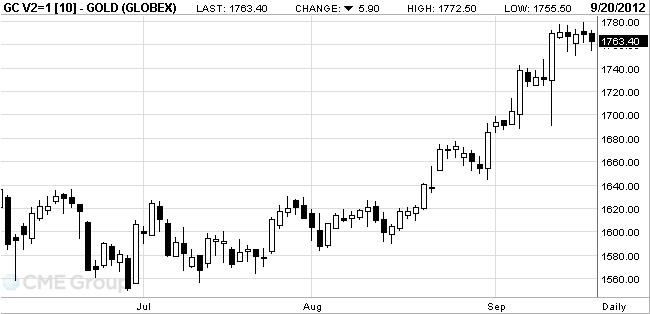- Gold drops
Market news
Gold drops
Gold prices decline with the maximum reached on the eve of 6.5 months, as a stronger dollar and a decline in the stock markets and oil prompted investors to take profits.
The dollar rose after the release of a number of weak production reports in Europe and China, which are renewed concerns about global growth.
According to HSBC, a preliminary purchasing managers' index (PMI) for the manufacturing of China in September rose slightly by 0.2 points to 47.8, and this sector was the eleventh consecutive month of decline. This is a sign that the second-largest economy in the world slows down.
Meanwhile, the euro fell to its lowest level in a week after the release of weaker-than-expected manufacturing data in the eurozone. The preliminary purchasing managers' index (PMI) for the manufacturing eurozone in September rose by 0.9 points to 46.0. However, the index remained below the key level 50, separating the increased activity of its decline.
The number of initial claims for unemployment benefits in the U.S. in the week 9-15 September fell to 382,000 against 385,000 the previous week, and the data for the week September 2-8 were revised upward. However, this figure was lower than the forecast of economists.
Stocks of gold-ETFs on Wednesday declined to 607.000 ounces to a record high.
October futures price of gold on the COMEX is now 1763.4 dollars per ounce.
